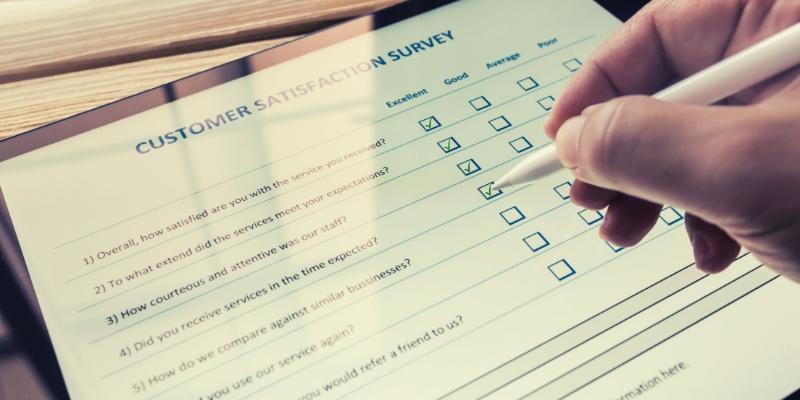
Business transformation these days is being driven by digitisation, and companies wanting to keep pace are under pressure to meet customer needs and expectations. To do this, it’s vital that CEOs and CIOs get to grips with exactly what those expectations are.
Unless you understand just what your target client is looking for from your product or service, it’s difficult to be able to provide it. And since customer satisfaction is just the tip of the iceberg for most service-centric organisations, most delivery leads prefer exceeding expectations instead.
Understanding customer expectations.
So what are customer expectations, how are they formed, and how have they changed over time in the light of digital disruption?
Customer expectations are the behaviours and actions clients believe they will get from dealing with your company. In the past, they expected basics, such as good service and fair prices. Modern clients have higher expectations, though, and want companies to know what they need and to talk to them by name. They also expect you to make sure they get the same information and service from all departments, regardless of who they are dealing with at the company.

People form these ideas about good customer service thanks to breakthroughs in technology. The use of cloud services, mobile, social media and artificial intelligence (AI) give companies ways to deliver personalised customer experiences more easily than before. As a result, the client starts to expect a superior customer service experience every time he or she deals with a company.
Research from Salesforce’s State of the Connected Customer shows 76% of customers will now easily switch from brand to brand to find the type of customer service experience they want. This makes it important for brands to deliver great customer service to make sure they stay in business.
But do customer service expectations continually escalate? Companies such as Vonage believe they do, mainly because of the way service has improved through digital disruption. As larger companies get better at providing service, customers have started to expect the same levels of improvement from every company they deal with. Put simply, they expect you to provide a higher level of customer service because they’re already getting it elsewhere.
Cultural factors are one of the strongest influences on buyers, comprising a set of values, wants, and behaviours. It’s important to monitor the trends in your market that cause products to be useful for consumers in other subcultures, or you could find yourself “preaching to the choir” and unable to grow the business.
How to identify customer needs and expectations.
Customer service expectations vary depending on the industry you are in, so it’s vital to find out what do customers expect from excellent customer service, and how do they demonstrate their needs and expectations? There are multiple ways to get the answers to these questions, and in this age of digital disruption, there are very useful tools you can use. The important actions you need to take are:
#1 Ask.
The best way to find out what people want is to ask them, so look for ways to get your customers to tell you. Some methods you can use include client surveys, focus groups, customer feedback forms, reviews online and in social media. You might need to use different methods for end-user consumers vs. B2B customers because according to the 2018 B2B Buyers Survey, buyers want to develop relationships with companies offering custom solutions.

#2 Collect.
All the actions listed above will result in giving you data you can use to learn what your consumers expect. The more data you gather, the better you’ll know what your market believes about your product or service, what they think of it, and whether they need it to be better. When you have a level of service to meet it helps to have business intelligence available that you can use to inform your decisions.
#3 Categorise.
Categorising or segmenting the data you gather from customer feedback enables you to paint a clear picture of the type of customer who needs you, what they want, and how they want it. This might be different from consumers to B2B customers. Client relationship management (CRM) programs make it easy to do this based on a list of criteria, so you can understand different types of clients and find better ways to serve them.
#4 Listen.
Customers have high-level expectations of companies they buy from, and letting them down just once can make them change providers. A recent study from CallMiner shows 82% of consumers will switch after one bad experience of poor customer service. This makes it important to not only listen to the data and customer feedback but to ensure your front-line staff provide high quality, good customer service when dealing with clients.
This infographic from CallMiner shows how listening to customers can reduce customer churn and improve ROI.
But what is the difference between a customer’s needs, wants and expectations?
In sales, a need is something that solves a real (or imagined) problem. A want, on the other hand, is simply something that would be nice to have. Often customers have no idea what they need, they simply know what they want. Whether the item is a need or a want is irrelevant, however, if it doesn’t deliver what it’s supposed to. This is where expectations come in because customers expect if you sell them a product or service that it will do what it is intended to do.
It takes transformational leadership.
With strong transformational leadership, you can make sure your company staff are trained, motivated, inspired, and stimulated to provide superior customer service. By encouraging employees to go the extra mile in all dealings with clients, you could end up exceeding customer expectations instead of merely managing them.
How to exceed your customer expectations.
Delivering what customers expect sounds great, but what about going one step further and actually exceeding them?
It’s certainly possible, with all the digital tools you can use these days. But what does it actually mean, and how do you go about exceeding customer expectations? To really create a great experience, you’ll need to define the areas of your service that customers value the most, and then find ways to serve them even better.
Why is it important to meet and exceed customer expectations, though, you might wonder. Some of the benefits your company can get by doing so are:
Better competitive advantages.
In certain industries, customer service might be the best way to be competitive. If your prices, hours, and the quality of your products and services are the same as your competitors’, what reason does your customer have to choose you instead of them? The way your team treats clients makes a huge difference to the customer experience, and this can be the reason why clients continue to choose you.
Stronger customer loyalty.
The best way to make sure your company remains in business is to develop a list of loyal customers. Providing clients with outstanding service every time they deal with you is the best way to do this.

This also applies to the digital customer experience they have when they interact with your various online systems. When consumers find a reliable company to do business with that not only gives them good value for their money but treats them with respect, they’ll stay with it and buy again and again.
More word-of-mouth advertising.
Word of mouth is still the best form of advertising, as well as the cheapest. It’s no secret some companies give horrible service, and customers aren’t afraid to tell others all about it. If you give them a good level of customer service every time you deal with them, however, the chances are good they will tell people all about that, too.
Delivering good customer service at every stage of the journey lets people know you’re not just listening, you’re reacting, which is definitely the right way to manage expectations. The digital transformation movement is causing changes in customer expectations, and it’s important for companies to stay up-to-date on developments.

